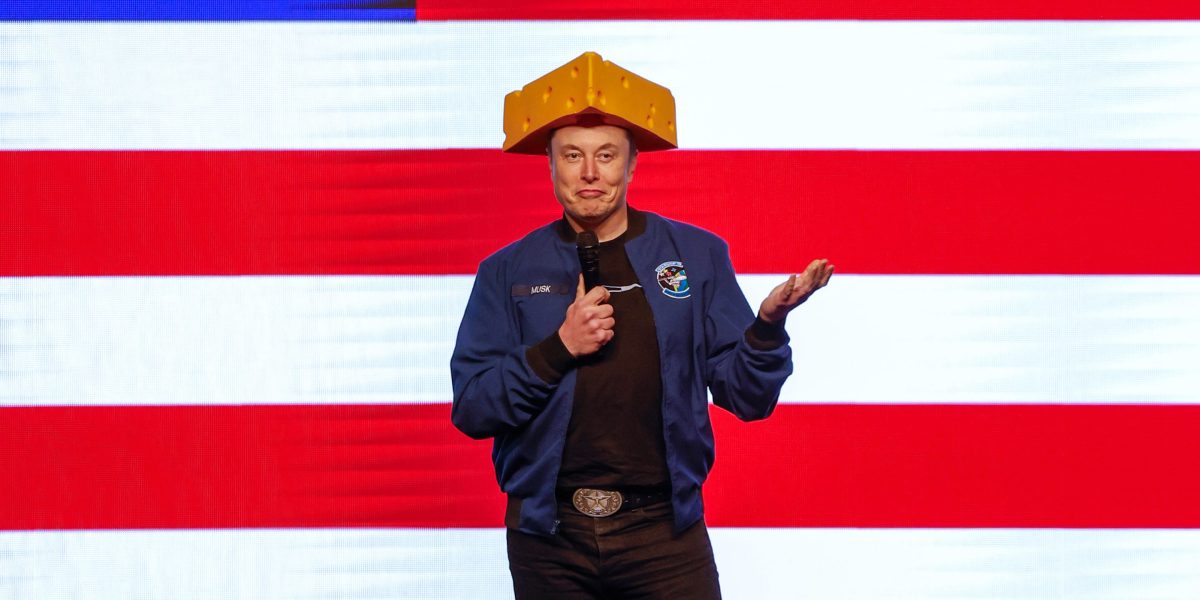Judge Susan Crawford preserved liberals’ narrow majority on the Wisconsin Supreme Court Tuesday by defeating conservative Brad Schimel, but in a way the real loser of the election was billionaire Elon Musk.
Musk and his affiliated groups sunk at least $21 million into the normally low-profile race and paid three individual voters $1 million each for signing a petition in an effort to goose turnout in the pivotal battleground state contest. That made the race the first major test of the political impact of Musk, whose prominence in President Donald Trump’s administration has skyrocketed with his chaotic cost-cutting initiative that has slashed federal agencies.
Crawford and the Democrats who backed her made Musk the focus of their arguments for holding the seat, contending he was “buying” the election, which set records for the costliest judicial race in history.
“Today Wisconsinites fended off an unprecedented attack on our democracy, our fair elections and our Supreme Court,” Crawford said in her victory speech. “And Wisconsin stood up and said loudly that justice does not have a price, our courts are not for sale.”
Trump endorsed Schimel as the race turned into a proxy fight over national political issues. The state’s high court can rule on cases involving voting rights and redistricting in a state likely to be at the center of both next year’s midterm elections and the 2028 presidential contest.
But Musk’s involvement dialed those dynamics up to 11: “A seemingly small election could determine the fate of Western civilization,” the billionaire said Tuesday in a last-ditch call to voters on his social media site X. “I think it matters for the future of the world.”
Notably, America PAC, the super PAC backed by Musk, spent at least $6 million on vendors who sent door-to-door canvassers across the state, according to the non-partisan Wisconsin Democracy Campaign. It was a reprise of what the group did across the seven most competitive presidential battleground states, including Wisconsin, which were carried by Trump in November.
But the end results this time were not good for Musk. Despite the millions he spent on Schimel, as of late Tuesday night the Supreme Court candidate was losing by four percentage points more than the other Republican-backed statewide candidate, Brittany Kinser, who also fell short in her bid for superintendent of public instruction.
Musk’s court race defeat wasn’t only because of crushing Democratic margins in deep blue cities like Madison and Milwaukee. Crawford’s margins were higher in places where the Musk-backed group America PAC had been active, including Sauk County, just north of Madison, which Crawford was carrying by 10 points after Trump won it by less than 2 points in November.
In Brown County, the home of Green Bay where Musk headlined a campaign rally with 2,000 people on Sunday, Crawford beat Schimel. Trump won the county by 7 percentage points last year.
Overnight, Musk posted on his X platform that “The long con of the left is corruption of the judiciary.” In another comment, he seemed to take solace from voters’ approval to elevate the state’s photo ID requirement from state law to constitutional amendment. The platform was rife with criticism from Trump opponents for his involvement in the race.
“Please send @elonmusk to all the close races!” Jon Favreau, former speechwriter for President Barack Obama, wrote.
“Elon Musk is not good at this,” J.B. Pritzker, Illinois’ Democratic governor and a billionaire himself who donated to support Crawford, posted on X.
Voters definitely had Musk on their minds.
“There’s an insane situation going on with the Trump administration, and it feels like Elon Musk is trying to buy votes,” said Kenneth Gifford, a 22-year-old Milwaukee college student, as he cast his ballot on Tuesday. “I want an actual, respectable democracy.”
Others may not have had their vote decided by the billionaire but were all-too aware of the money pouring into their state.
Jim Seeger, a 68-year-old retiree who previously worked in communications and marketing, said he voted for Schimel because he wants Republicans to maintain their outsized majority in Wisconsin’s congressional delegation, which could be at risk if Crawford wins and the court orders the maps redrawn. But, he added, he was disappointed the election had become a “financial race.”
“I think it’s a shame that we have to spend this much money, especially on a judicial race,” Seeger said as he voted in Eau Claire.
Wisconsin’s Democratic Attorney General, Josh Kaul, sued to bar Musk from making his payments to voters if they signed a petition against “activist judges.” The state Supreme Court unanimously declined to rule on the case over a technicality.
Musk swooped into the race shortly after Trump’s inauguration. Republicans were pessimistic about being able to win the seat. They lost a longtime conservative majority on the state high court in 2023, and Democrats have excelled in turning out their educated, politically tuned-in coalition during obscure elections such as the one in Wisconsin.
Musk duplicated and expanded on some of the methods he used in the final weeks of last year’s presidential race, when he spent more than $200 million on Trump’s behalf in the seven swing states, including Wisconsin.
This time, in addition to the $1 million checks, Musk offered to pay $20 to anyone who signed up on his group’s site to knock on doors for Schimel and posted a photo of themselves as proof. His organization promised $100 to every voter who signed the petition against liberal judges and another $100 for every signer they referred.
Democrats were happy to make Musk a lightning rod in the race.
“People do not want to see Elon Musk buying election after election after election,” Wisconsin Democratic Party Chair Ben Wikler said Monday. “If it works here, he’s going to do it all over the country.”
This story was originally featured on Fortune.com
Source link


 Entertainment8 years ago
Entertainment8 years ago
 Politics8 years ago
Politics8 years ago
 Entertainment8 years ago
Entertainment8 years ago
 Entertainment8 years ago
Entertainment8 years ago
 Tech8 years ago
Tech8 years ago
 Tech8 years ago
Tech8 years ago
 Tech8 years ago
Tech8 years ago
 Politics8 years ago
Politics8 years ago






